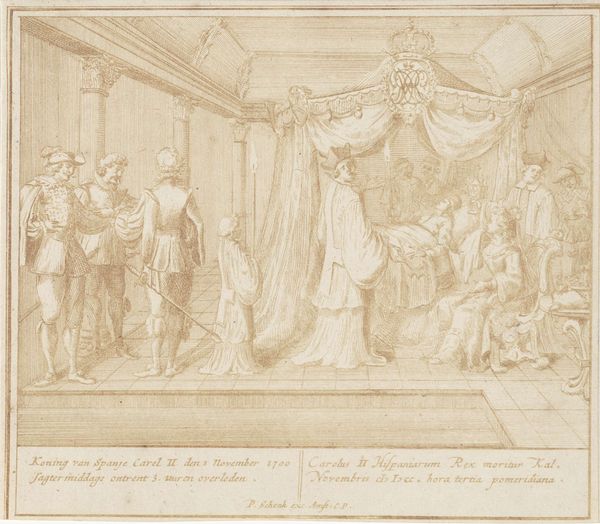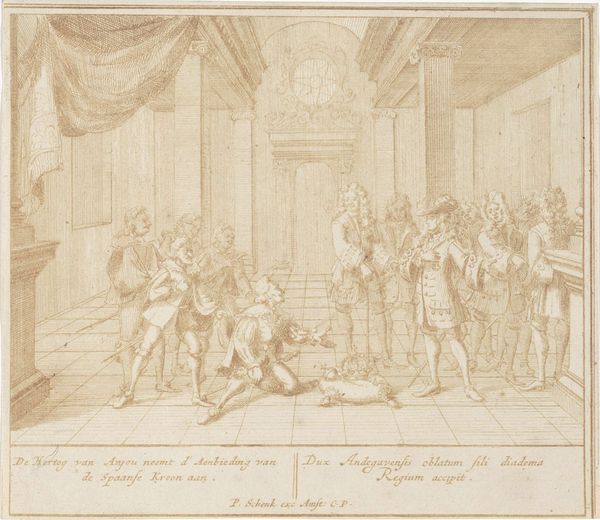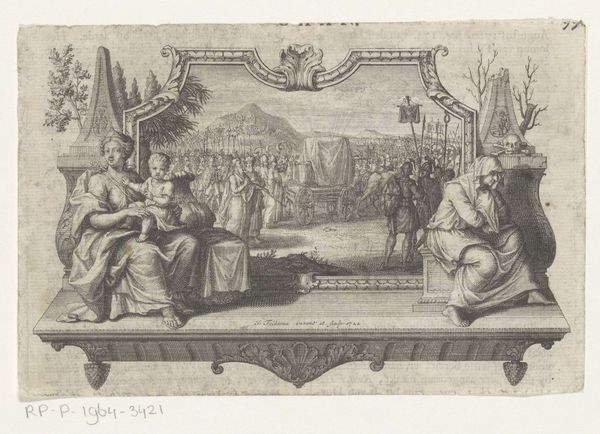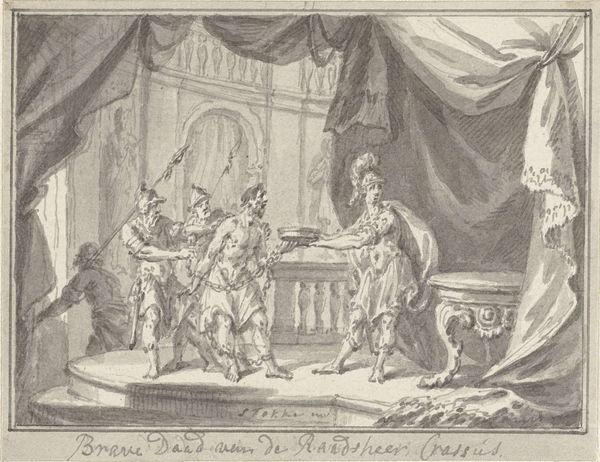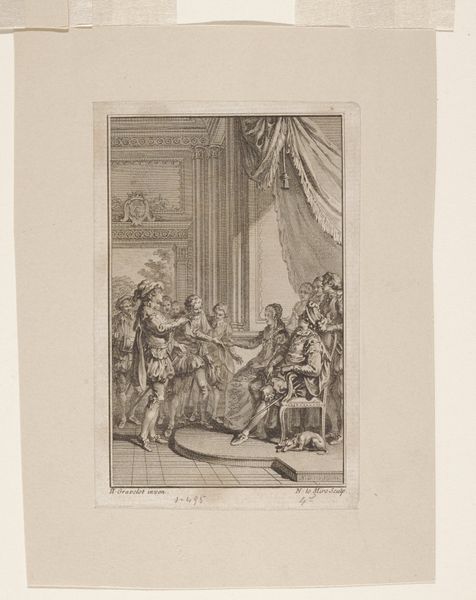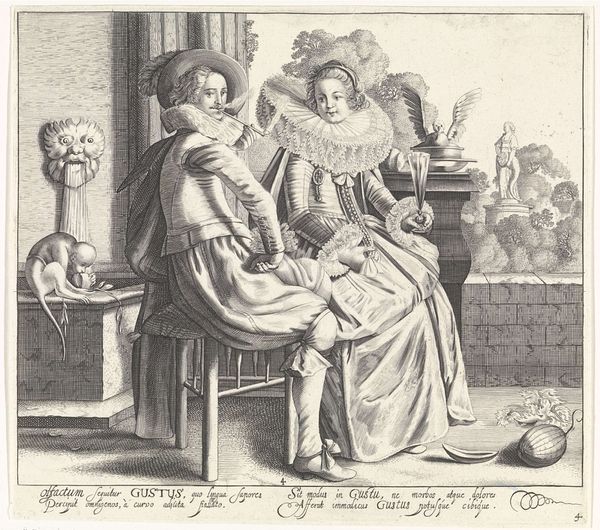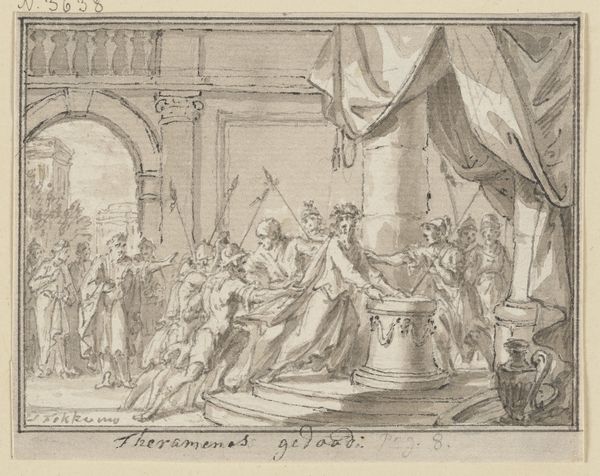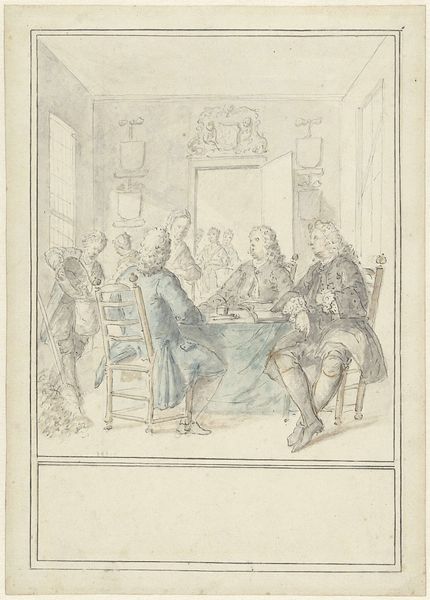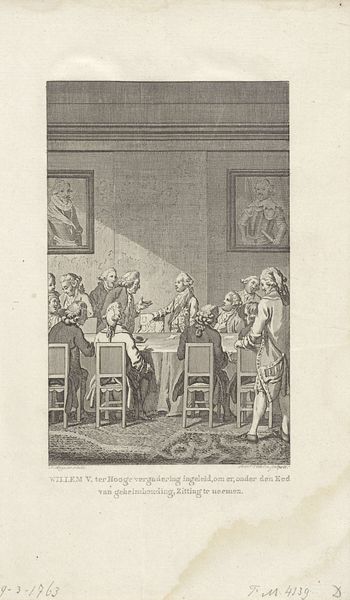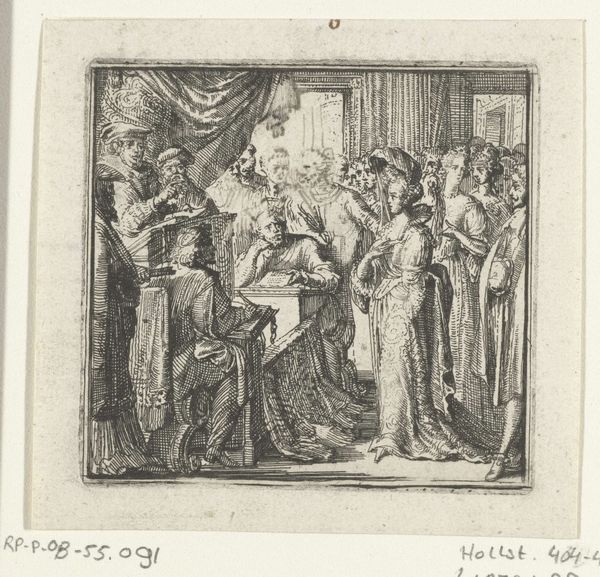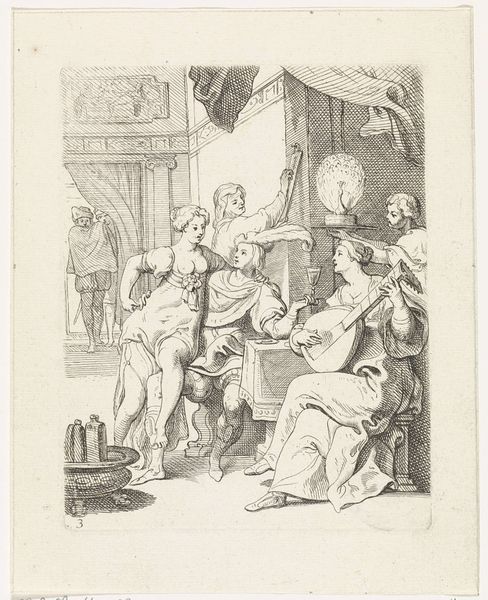
print, engraving
#
portrait
#
narrative-art
#
baroque
# print
#
history-painting
#
engraving
Dimensions: height 160 mm, width 181 mm
Copyright: Rijks Museum: Open Domain
Curator: Looking at this print by Pieter Schenk, created between 1706 and 1727, I'm immediately struck by the detailed engraving, capturing a somber event with an almost theatrical quality. It depicts the reading of King Charles II of Spain's will. Editor: The first impression is definitely muted; the color scheme gives it an antique and serious ambiance. The division of figures on either side of what look like tables makes me wonder what power dynamic Schenk tried to convey. Curator: Yes, the composition guides our eyes from the Duke of Anjou on the left to other figures awaiting the testament’s pronouncements. Given the historical weight of the event—Charles II’s death sparked the War of the Spanish Succession—Schenk’s print functions as more than just reportage. Editor: So, this print becomes a powerful social commentary. One of its purposes, as with many prints, was also distribution and the visualization of political implications among the public. Did Schenk make other related works, indicating the subject was a recurring one of political importance? Curator: Exactly. Prints such as these facilitated widespread knowledge of pivotal historical events and their actors. Schenk indeed made several works chronicling contemporaneous European conflicts. Each portrait in the composition adheres to typical baroque conventions and alludes to continuity within royal symbols. Editor: What I find interesting, culturally speaking, is the performative aspect of power. Reading a will is a somewhat symbolic moment, of course, but to immortalize it like this suggests it holds immense weight, even perhaps altering psychological assumptions of power dynamics, especially as this testament shaped subsequent wars and social formations. Curator: Well, prints played that important public role: solidifying certain images and actions as part of our shared cultural narrative. Even now, knowing the history, viewing this engraving, it prompts thoughts on how fragile power can be. Editor: Indeed, and the meticulous detail of Schenk’s lines etches these questions deeply into our minds long after viewing. The piece becomes an invitation to understand historical turning points and political memory in a more holistic sense.
Comments
No comments
Be the first to comment and join the conversation on the ultimate creative platform.
